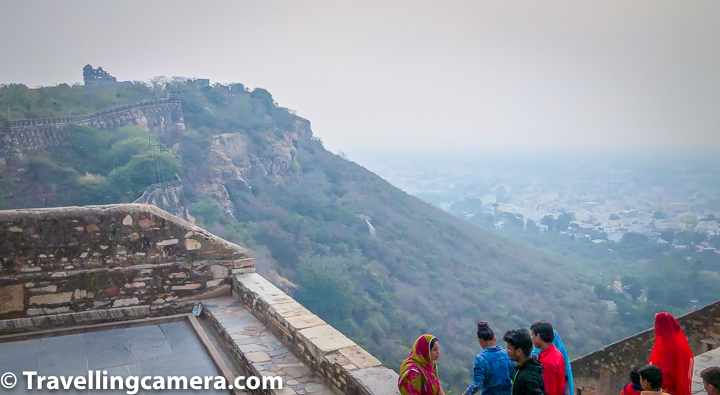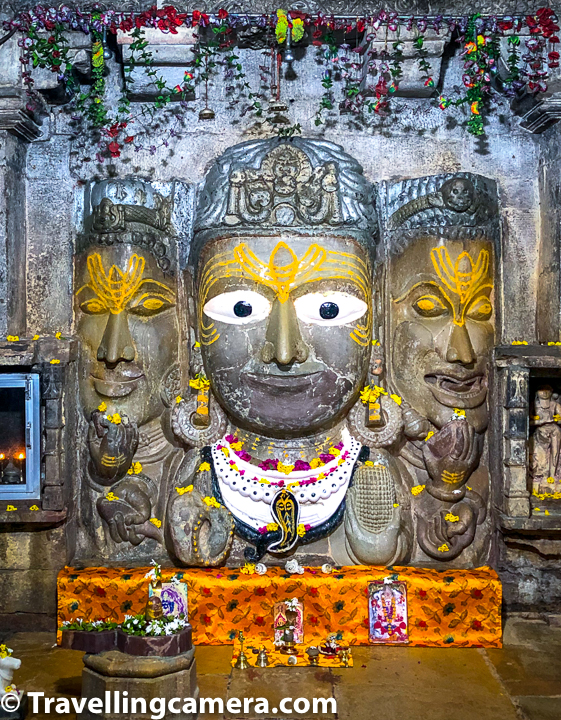Samadhishvara Temple with 3 faces of Shiva - A brilliant piece of Architecture built in 11th century inside Chittor fort of Royal Rajasthan
While exploring Largest Fort of India in Chittorgarh, we also visited this beautiful temple located close to Vijaya Stambha of Chittor Fort. So far we have shared about Rana Kumbha Palace and Victory Towers of Chittor Fort. This blogpost will share about Samadhishvara Temple, why it's so special, stories associated with it's importance in Chittorgarh & something which you may have never expected about a Shiva temple in India.
We were visiting Chittor Fort from Udaipur, which is approx 2 hrs drive one way. The Samadhishvara Temple is a Hindu temple inside Chittor Fort of Rajasthan, India which is also featured in popular bollywood movie Padmavat. This temple is very close to Victory tower and holy water tank. Temple is dedicated to lord Shiva who is also called "Samadhishvara" which means "Lord of Samadhi".
Related Blogpost - Badal Mahal in Rajasthan - A brilliant palace inside Kumbalgarh Fort for Panoramic Views of the mountains surrounding second largest wall of the world
Above photograph shows The water reservoir close to the Shiva temple of Chittor which is known as Gaumukha Tirthasthala. If you remember we had shared about this reservoir, temple and zanana mahal in Rana Kumbha Palace blogpost.
Related Blogpost - Tour de Churu Streets having grand havelis with marvelous fresco paintings | Haveli Heritage Tour Rajasthan, India
Above photograph shows the view of Chittorgarh town from Shiva Temple. This place offers great panoramic view of the town and water reservoir.
There is a very interesting thing about the architecture of Shiva temple inside Chittor Fort that it was built/restored over a period of five centuries (11th-15th century). And that's the reason that it has varied sculptural styles.
Related Blogpost - Hamerpal Lake - A place which needs serious reconsideration by everyone visiting Kumbalgarh & Rajasthan Tourism for conservation of it's great natural ecosystem
The sanctum of the temple contains an image of Shiva. The image depicts Shiva as having three heads and all of them are shown wearing jata-mukutas. Each of the three faces of Shiva idol has a third eye and the face on right bears a terrifying expression. Centre and the left faces of Shiva idol show peaceful expression.
Related Blogpost - Vedi Temple inside KumbalGarh Fort, Rajasthan - 3 Storey Octagonal structure standing strong on 36 pillars around world's second largest wall
Above photograph shows designs on the outer part of Shiva temple in Chittor Fort. On outer side of the temple has some beautiful designs and sculptures showcasing :
- Animal Hunting
- Royal Battles
- Royal processions and courts
- Religious themes like worship of stupas, lingas, jinas, and other deities
- Other scenes from common life, such as bullock-carts, camel-carts, and artisans at work
Related Blogpost - Kumbhalgarh Fort of Royal Rajasthan - A grand example of Indian defence Architecture within the second Longest Wall in the world
In current times, locals call the temple diety "Adbhut-ji" or "Adbad-ji", which is a name also used for the deity of a 15th-century Shiva temple near Surajpole. Three faced Shiva inside the temple may have lead to this name.
Related Blogpost - Evening Light and Sound Show at Kumbalgarh Fort - Something you certainly don't want to miss after sunset, when in this beautiful part of Royal Rajasthan
As per Archeological Survey of India (as narrated by local guides of Chittor Fort), this Shiva temple was constructed in the 11th century and was further restored in the 13th and the 15th centuries.
Related Blogpost - Neelkanth Mahadev Temple inside KumbalGarh Fort, Rajasthan - One of the few active temples inside Second Longest Wall of the World
There is a pavillion of Nandi in front of the Shiva Temple and this is the place from where you can see the water tank on your right (when you stand near the pavilion and look facing towards the Shiva temple)
Related Blogpost - Ranakpur Jain Temple in Pali District of Rajasthan || Gorgeous Architecture Inspired by a Divine Vision







.jpg)
Comments